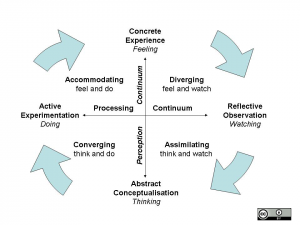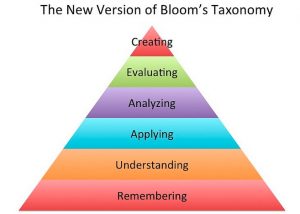27 Organizing and Planning Your Narrative
The Educational Narrative has an important role to articulate and provide evidence to support the case you are making about your learning. As we just read, using very specific examples from your life will illuminate and fill in details and give your reviewers a clear picture of your experience.
The three sections of your portfolio are separate but very intertwined. The Educational Narrative complements both the PLA Resume and the Supporting Documentation by adding to the overview they create. The Educational Narrative shows you in action, going through the experiential cycle to learn, and applying that learning to gain expertise
In this section we will begin planning and outlining your Narrative, and you will be using the work you’ve done on the PLA resume and Supporting Documentation to help shape your outline. You will also refer to specific documents in your Narrative as a way to intertwine the two sections.
Examples or Case Studies Covering the Course Objectives
An essential aspect of a successful narrative section is your description of your theoretical knowledge and applied learning. The person who reads your narrative needs explicit proof of the learning. Your narrative should provide examples, stories, and plenty of detail.
The best way to give this proof of learning is to focus your Narrative around the Course Objectives of the class or classes you’re challenging. Each grouping of outcomes can act as a topic or area you need to be sure to address in your writing. For each outcome, you will list any of your experiential knowledge, theoretical understanding, or applied learning that is relevant to it.
You have started this work already by writing your PLA resume and gathering Supporting Documentation. Use what you have produced already to create a narrative that will support your challenge. Using these other portfolio components as a starting point can be a great way to begin writing your Educational Narrative. Reread those and think of as many examples as you can to substantiate your claims that you’ve already learned everything the course teaches, and relate your documentation to the examples.
As you work with the examples, you’ll need to fill in subtopics, specific stories or situations, and documentation within each major topic. We will look more closely at this in an upcoming section of this textbook, and the course will lead you through a writing exercise on this.
Organization Using Kolb and Bloom
Many Prior Learning Portfolios at other institutions use one long Educational Narrative to respond to all of the Course Objectives. We have used this model in the past, as well.
However, we now ask Prior Learning students to write a series of shorter, more focused Narratives responding to a set of questions that target the Course Objectives. We believe this approach makes for a more effective and thorough presentation of your learning, allowing you to focus on digging into specific examples and applying terminology easily.

under license “Creative Commons Attribution 4.0 International”
To guide you through writing this series of shorter, focused essays for your Narrative, we will be asking you to respond to a series of questions that correspond to the class’s Course Objectives. In some questions you will be asked to frame your learning with Kolb’s Experiential Learning Cycle, leading your reviewer through each of the four stages to show how you achieved your learning and gained your knowledge of the course subject matter.

Your Narrative answers will also need to exhibit college-level learning, so you should keep Bloom’s Taxonomy in mind and make sure you’re using verbs and terminology in those four highest-level cognitive domains: Applying, Analyzing, Evaluating, and Creating.
Refer back to Chapter 1 to reengage with Kolb’s Learning Cycle and Bloom’s Taxonomy. We will cover this writing approach further in an upcoming chapter.
Educational Narrative Response Length
You might ask: How long should my narrative be? You have a lifetime of experience to somehow cram into a Prior Learning Portfolio. How do you fit it all in?
The best approach is to not try to fit it all in. Instead, choose the most powerful, clear examples you can that illuminate your experience and speak to the Course Objectives most clearly. Make sure your answers are relevant and pertinent to the question. Your job is not to tell your whole life story, nor tell everything you’ve learned. Instead, focus on telling your reviewer how you already learned in the real world everything the class would’ve taught you. You don’t want to overwhelm your reviewer with too much information.
Therefore we generally aim for answers to each question to within the range of 500-1000 words. So the total word count for all your questions for one course might be 1500-3000 words or more, depending on the number of questions. However, there is no definite number of words or pages required for an effective narrative; the length depends primarily on the subject matter and on the extent of your own learning.
Keep in mind that you are asking to “test” out of a semester-long course, and thus your rationale for doing this and its proof should be substantial. You need to be sure that your narrative addresses all relevant course objectives for each of the courses in your portfolio.
Attribution:
This chapter contains material taken from “PLA 200: Introduction to Portfolio Development, Module 6, Lesson 6” by Center for the Assessment of Learning and Terry Hoffmann licensed under CC BY 4.0.

